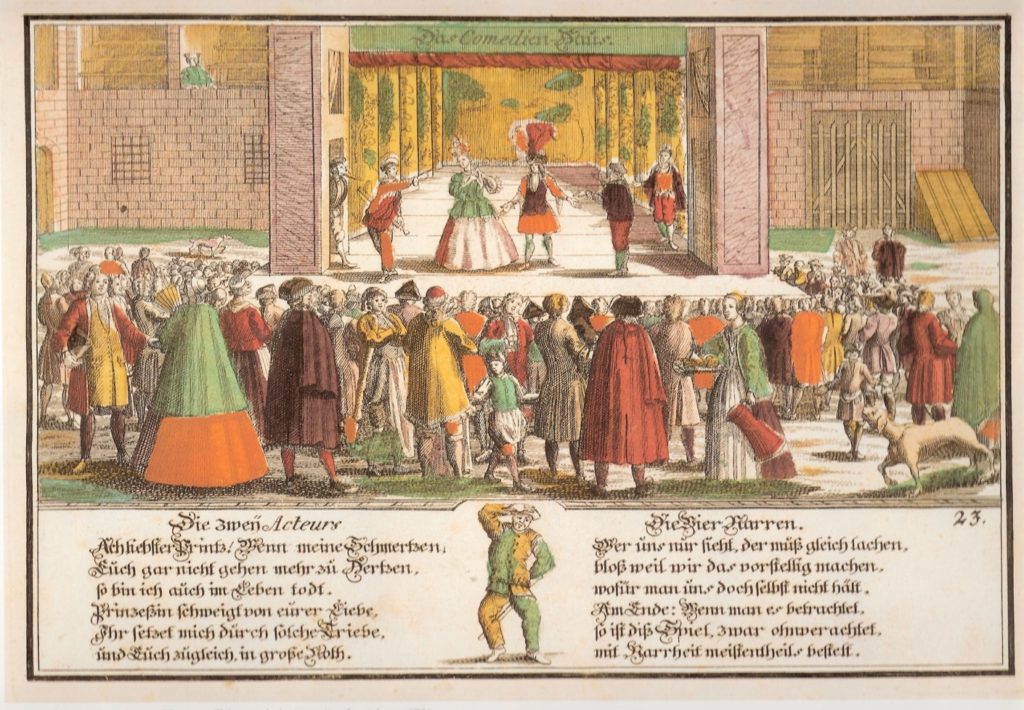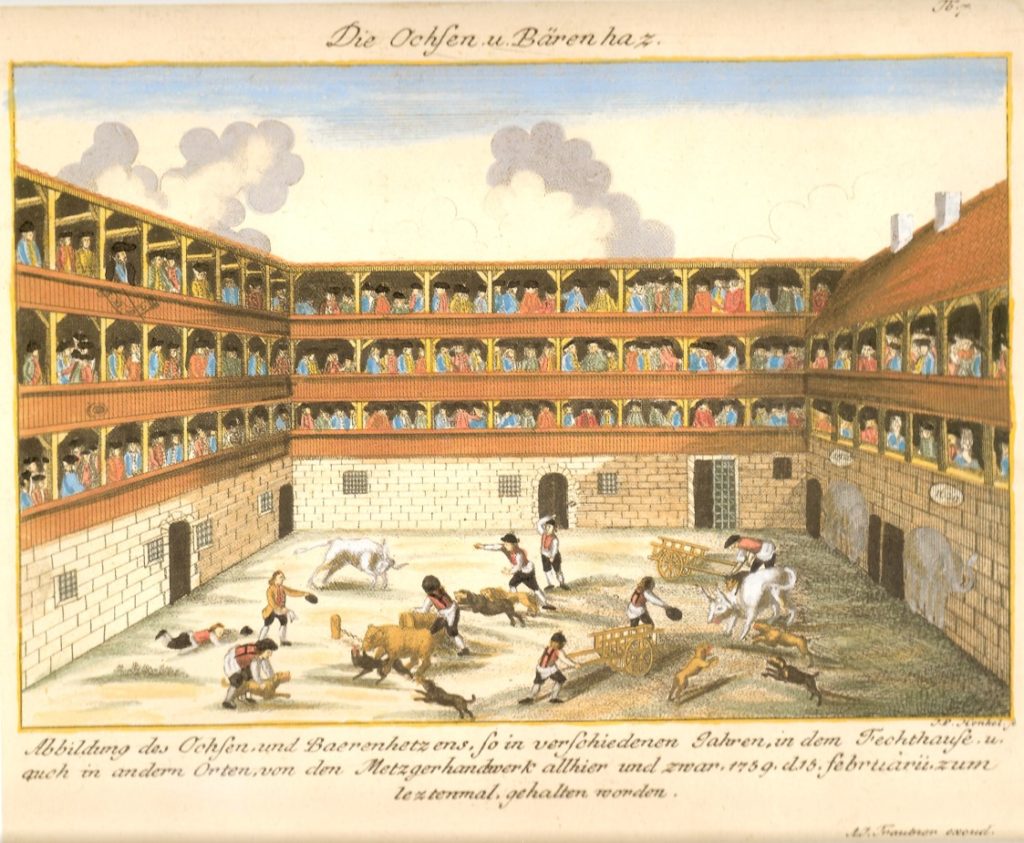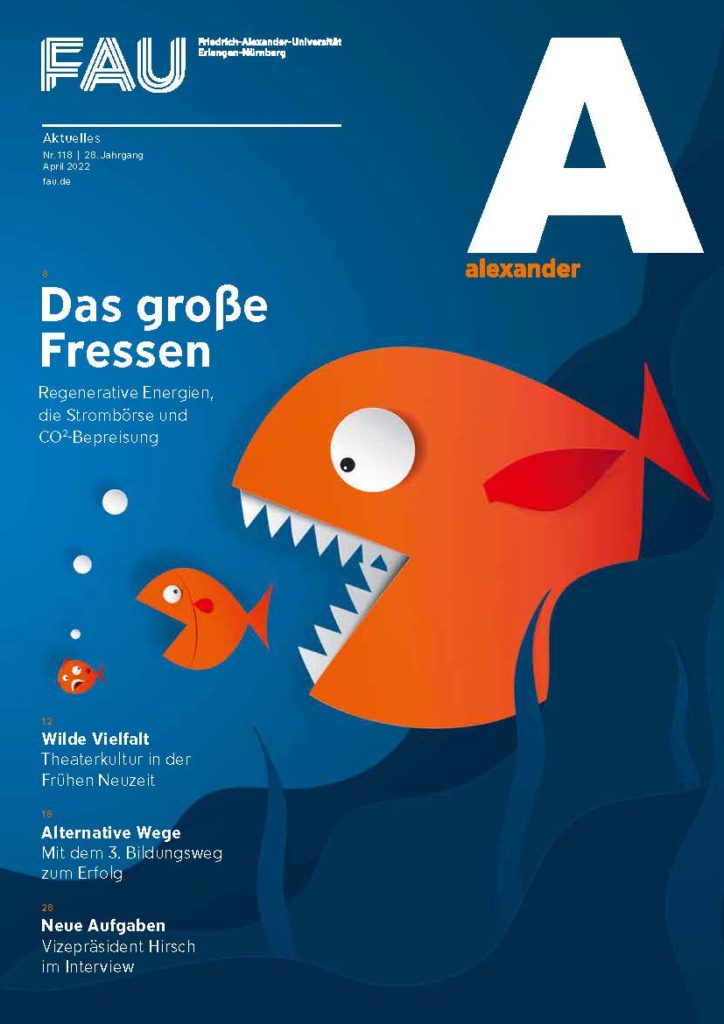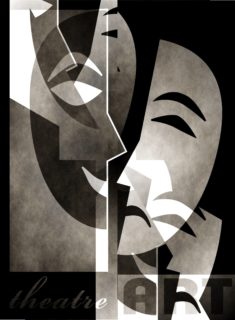Theater culture from another era
More diverse, heterogeneous, colorful and lively: Theater culture in the Early Modern period in the Holy Roman Empire was certainly very different to the theater we have been familiar with since the theater of the ‘Bildungsbürger’ of the late 18th century.
Aspects such as the level of artistry, the repertoires or the performance settings of the period are simply not comparable with those we are familiar with today,” says Prof. Dr. Jörg Krämer. Krämer, from the Chair of Modern German Literature with a Systematic focus at the Department of German and Comparative Studies at FAU, continues: “There was a great deal more interaction between the audience and the performers in those days. The audience even occasionally interrupted the actors.” Several aspects of theater culture between around 1600 and 1800 were also completely different. “It is characterized by an enormous variety and heterogeneity,” says FAU researcher Krämer, whose research focuses on German literature, music and theater in the 17th to 19th centuries. The performances were usually very long and extremely varied. Tragedy followed comedy and acrobats performed between the acts. Another significant difference is the fact that the actors on stage were not professionals, but amateurs (craftsmen and women, for example).

The various forms of theater were also equally as diverse. Whereas the famous Nuremberg master singer and playwright Hans Sachs used Biblical themes as a basis for short theatrical scenes, the butchers of Nuremberg took part in a parade in the city known as the “Schembartlauf”. “This lively mixture of procession, dancing and theater with its repeated short performances was similar to what we call performance art today,” says Jörg Krämer. However, the region around Nuremberg was not only known as one of the most significant centers of theater in the early modern period because of Hans Sachs and his master singers. Nuremberg was the first German speaking city to build its own communal theater building, the “Fechthaus” on Insel Schütt. Other theaters were also subsequently built, such as the “Nachtkomödienhaus” at Lorenzer Platz in 1668. These were joined by taverns, churches, schools and the University of Altdorf.
Places for amusement
“Theater in the Holy Roman Empire had a completely different status,” emphasizes lecturer Dr. Victoria Gutsche, who is a research associate at the Chair of Modern German Literature. “The theater was one of the few places for amusement.” In addition, theater in the Early Modern period served as a kind of vent for society. For example, during carnival, it offered the opportunity for people to cast conventional norms to one side for a short period of time and go overboard during the celebrations. School theater, which was firmly anchored into the curriculum of schools in the Holy Roman Empire was a completely different concept. Pupils practiced memorizing texts, performing on stage and studying historical and Biblical themes. Some aspects of this idea have survived to this day, in the drama clubs offered by schools.
Public image and reputation

Theater culture in the Early Modern period has an unusual heritage that continues to shape the landscape of theater in Germany up until the present day. “The wide variety of theaters that exist, even in small towns, is due to this period. It was very important for the public image and reputation of residence cities, courts and trading centers in the Holy Roman Empire to have their own theaters,” says Victoria Gutsche. One thing has changed, however. The emergence of the opera after 1600 brought about a shift in theatrical practice. “The combination of singing and acting was too demanding for amateurs. There was an increasing number of professionals whose type of acting gradually replaced the more modest forms of theater that were previously on offer,” explains Gutsche. However, their art has not been forgotten. This is something that the team at Prof. Dr. Dirk Niefanger’s Chair is trying to ensure. “Not enough research has been carried out into theater in the Early Modern period as the focus up to now has mainly been on canonized authors and a small number of locations,” says Jörg Krämer. This is now set to change, both by means of the research being carried out at FAU and thanks to international and interdisciplinary academic exchange. The team held an international conference on the topic at the end of March in Nuremberg.
“It’s important to consider the importance of theater in the Early Modern period for the present day. This is because the literary theater we have become accustomed to today and that has become the norm is losing significance,” says Krämer. “It will be interesting to see how it will open up again for a new type of theater that is completely different from classic forms of theater and is oriented more towards the theater of the Early Modern period – with more interaction and performance.”
By Michael Kniess

In the current issue of alexander, you will find fascinating articles on yield losses in energy markets for renewable energies and why this is happening, on artificial tissue made of spider silk, on theater culture in the 17th century, on alternative ways of entering university, on the university hacking group FAUST and the Squirrels, an eSports group, as well as interviews with the new Vice President People Prof. Andreas Hirsch and the new FAU Ambassador Günther Weiss.
Read alex online